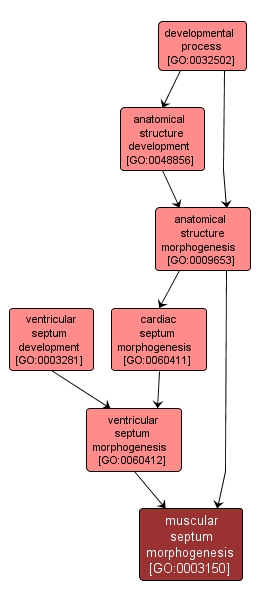GO TERM SUMMARY
|
| Name: |
muscular septum morphogenesis |
| Acc: |
GO:0003150 |
| Aspect: |
Biological Process |
| Desc: |
The process by which the muscular septum is generated and organized. The muscular septum is the lower part of the ventricular septum. |
|

|
INTERACTIVE GO GRAPH
|














